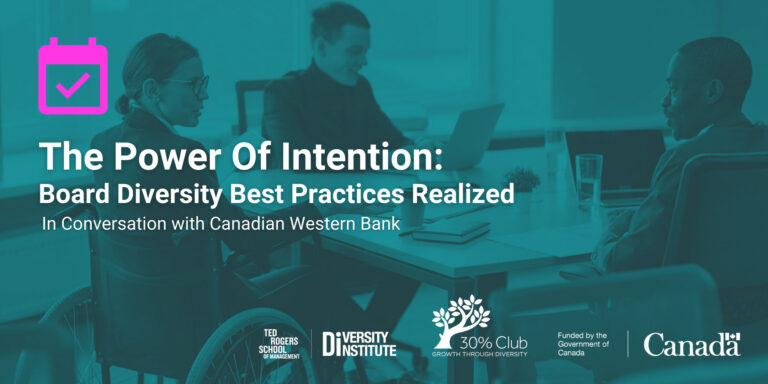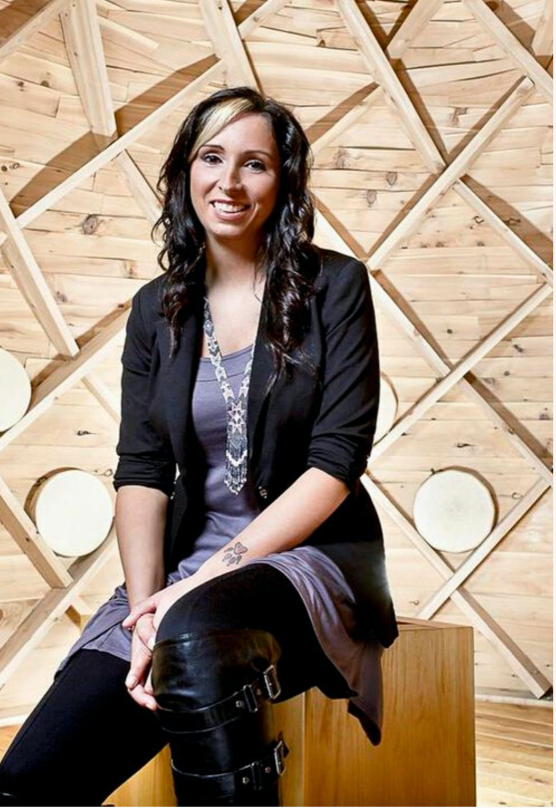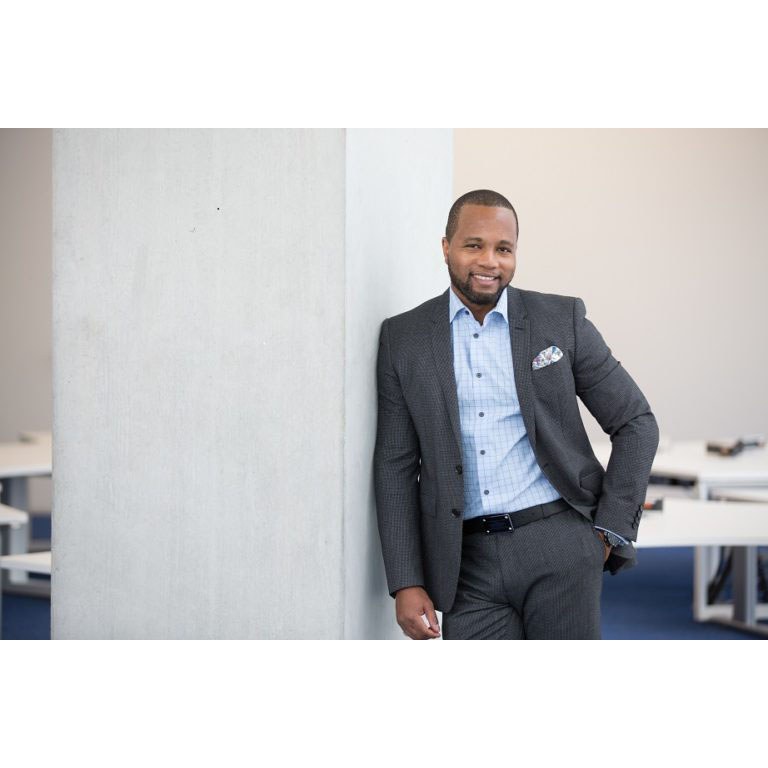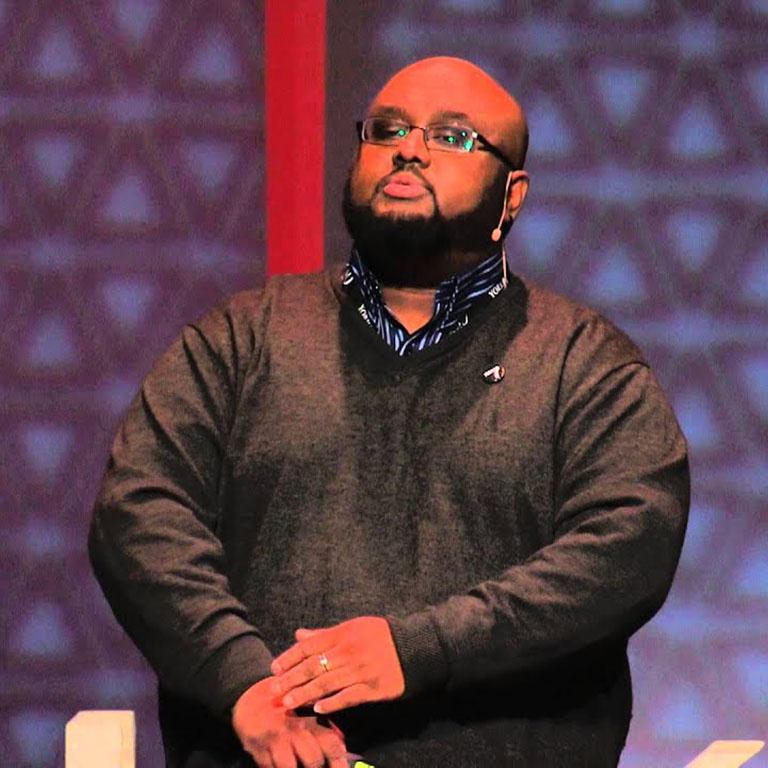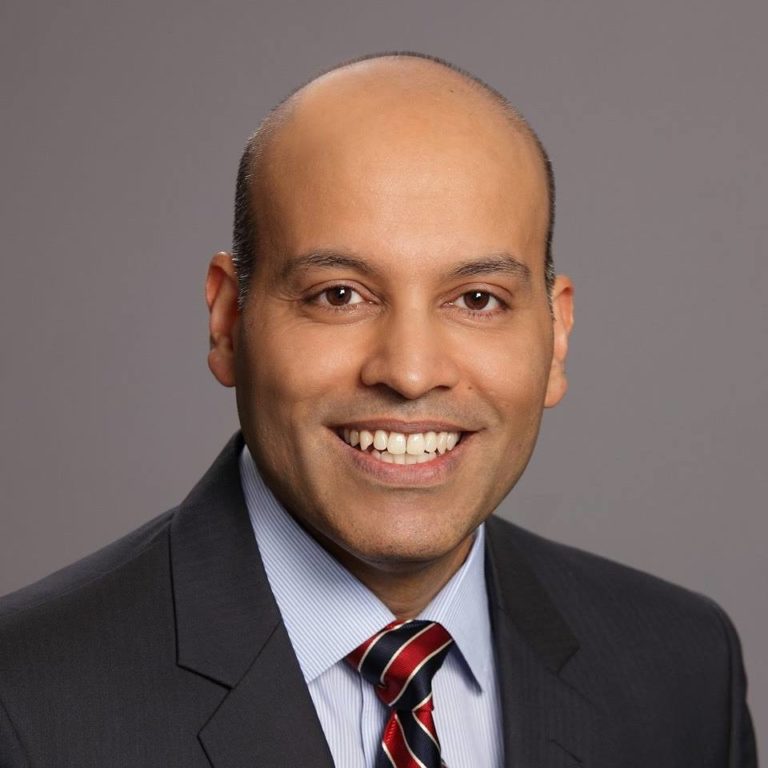Deloitte recently released a report — The design of everyday men — that investigates men’s experiences with work, family, and masculinity. Co-author Eric Arthrell explains how his personal experience of becoming a father inspired the study, and why taking a closer look at men’s success is an opportunity for gender equality.
By Hailey Eisen
The first line of experience on Eric Arthrell’s LinkedIn profile reads “Caregiver, Supporter, and Household Manager.” A quick scroll through the 31-year-old’s profile reveals that Eric is also a highly accomplished strategy consultant and a manager with Doblin, a global innovation firm out of Deloitte.
Currently on a seven-month paternity leave with his 14-month-old daughter, Eric is balancing the release of a report he recently co-authored with a team at Deloitte Insights with diaper changes, grocery shopping, and story time at his local library.
He’s proudly touting his paternity leave in hopes of setting an example for other young men. “There is an alternative for how you choose to show up at work and for your family — and that alternative can create more space for women to succeed,” says Eric (during a phone interview he strategically scheduled around his daughter’s naptime).
The Deloitte report, The design of everyday men, was published in early April and looks at “traditional masculinity” in order to better understand the individual and organizational reasons why companies still struggle with gender equality. It reframes the conversation, from trying to help underrepresented groups fit into the status quo, to investigating how this status quo is negatively affecting those who typically benefit from it.
How does this help women? As men begin to redefine their roles and take on more duties outside of work, women are no longer left to pick up the slack on household and other non-work responsibilities, which has traditionally been a disadvantage to their own career — especially with today’s “always on, always available” expectations. As men take more paternity leave, for example, the evidence shows a decrease in the wage gap, as well as women being more likely to stay employed full-time and earn senior leadership positions on boards.
“Gender roles are changing and men have the opportunity to find something different for themselves.”
For organizations, this shift means more gender equality in the workplace, greater competitiveness in today’s diverse marketplace, and more satisfied employees — both women and men.
“What I recognized — in thinking about my own involvement in my daughter’s upbringing and in writing this report — is that we have the opportunity to redefine what it means for a man to have a meaningful and happy life,” Eric explains. “While it used to be that being a strong earner and the head of the house was what mattered, gender roles are changing and men have the opportunity to find something different for themselves.”
The impetus for all this began for Eric when he and his wife Erin, an award-winning brand strategist, began talking about having a family. “I remember specifically trying to understand what fatherhood would look like for me if I wanted to support my wife and her career and have an equal role as a caregiver.”
Not finding many male role models who were balancing career success and active parental responsibilities, and finding that paternity leave policies differed greatly from maternity leave policies, Eric decided to have some conversations with senior leaders both within Deloitte and elsewhere. “What I found in those two-dozen coffee chats, was that many of the senior male leaders I spoke with said they wished they could have played a more active role at home but hadn’t seen an opportunity to do so while being a breadwinner.”
These informal conversations gave birth to the idea for the report, which would try to make sense of the biases in place around masculinity and the workplace, and what shifts needed to take place to enable men to approach gender equality not just as allies but as active participants.
“I think of an ally as someone who will mentor and champion, and empower another based on her ability to do an awesome job,” Eric says. “But as active participants we can take that one step further by righting the wrongs that have existed for some time, redefining what’s important in our own lives, and changing how we show up personally and professionally.”
Opportunities to support campaigns such as the 30% Club Canada and organizations focused on making real change in gender balance is just one example of active participation. Other examples are outlined in the report, which Eric believes will be the starting point for many important conversations around change.
Based on an ethnographic study of 16 professional men in and around the GTA, the study looks at men’s relationship to work, home, and masculinity. Based on its findings, the report provides three “calls for action” which business leaders can incorporate in order to set an example for other men within their organizations. These include recognizing the reasons for gender inequality in the workplace, shifting behaviours and practices to lead in a more mindful way, and breaking down barriers to change.
As Eric was finishing the report, he was also preparing for his own paternity leave — taking over for his wife who had spent the past 12 months at home with their daughter. “There is a world where I could have decided that instead of sharing the parenting responsibilities, I’d put my head down, work really hard, get promoted much earlier, take on more and more work, and continue to move up as fast as possible,” Eric says. But making a different choice, one which involved being available to support his wife even before he went on leave, has separated him from the “always on, always available” mentality which the report indicates as a success criterion contributing to gender inequality.
As the report states: “Individuals often prioritize work over family, personal commitments, and well-being to rise to the top, and men may be more predisposed to making this trade-off at the expense of their outside-of-work commitments. Women then wind up picking up the slack on household and other non-work responsibilities, thereby disadvantaging themselves by becoming unable to adhere to the ‘always on, always available’ expectation as easily.”
According to Eric, this isn’t benefiting anyone. “There is literally reams of research dating back to the early 1900s that over-work without scheduled time off leads to poor business outcomes, productivity, employee satisfaction, and retention,” he says. “So, one of the ways workplaces can support men in showing up differently is to reward productivity, skills, and competencies as opposed to recognizing and rewarding only those who are always on and always working.”
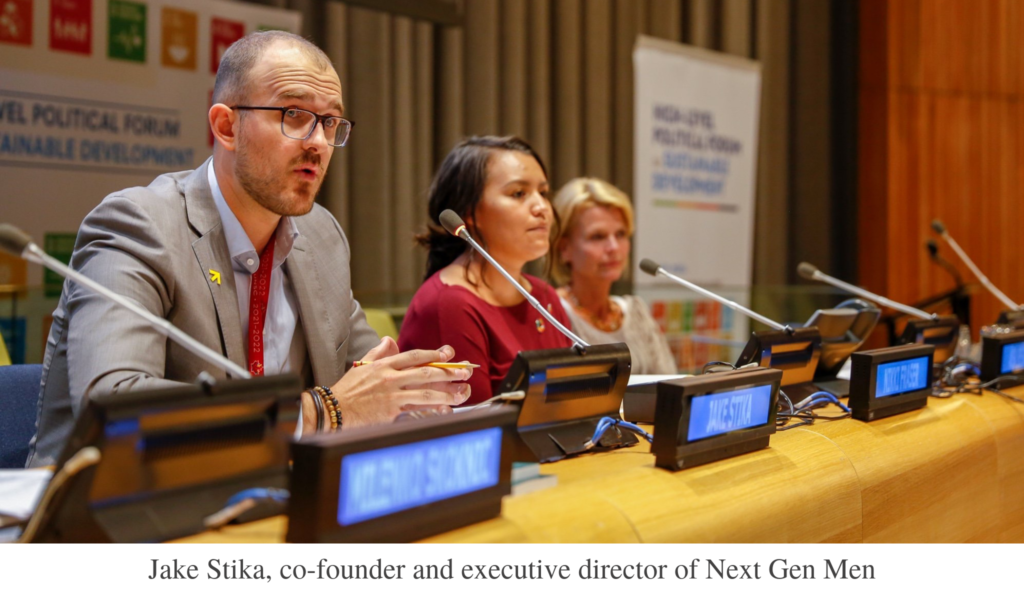
What’s required to make this a reality is a shift in the status quo says Jake Stika, co-founder and executive director ofNext Gen Men, a nonprofit organization that aims to engage men and boys in conversations around gender. “We need to transform the status quo of what we value in workplaces,” he says. “I would argue that valuing someone who is available all the time, who neglects other relationships for work, who dominates conversations and doesn’t allow all ideas to be heard, is not beneficial to the individual or the organization in the long run.”
The national nonprofit is focused on building better men through peer engagement, education, and empowerment — including a workplace initiative, Equity Leaders. Despite doing this work, the themes of the report hit close to home. He notes it’s not ‘those guys’ that need intervention — it affects all of us because it’s the culture we are steeped in.
“As a founder, I constantly feelit’s on me,and struggle to ask for help,” says Jake, a nod to two of the four “themes of masculinity” extracted from the Deloitte study. The themes — which encompass men putting pressure on themselves to handle responsibilities on their own, being afraid of failure, having difficulty turning to anyone for support, and looking to leaders and peers to determine what behaviours are acceptable — seem to be keeping professional men tied to traditional gender roles and holding them back from evolving.
“Valuing someone who is available all the time, who neglects other relationships for work, who dominates conversations and doesn’t allow all ideas to be heard, is not beneficial to the individual or the organization in the long run.”
“I try to show others it’s OK,” says Jake. “I do this by talking about my mental health struggles, I do this by taking public, intentional, and explicit leave for eldercare — I even set my out-of-office to let others know why I’m slow to respond. If I can’t do this for myself, how am I to make it ok for others?” Coincidentally, at the time of this interview, Jake’s out-of-office indicated he was “giving care and taking care,” spending two weeks in Prague caring for his elderly grandmother before taking a week in Spain to take care of himself.
Jake’s lead-by-example approach aims to support a shift from ‘restricted masculinity’ toward what he calls ‘positive masculinities’ or moving from what men should be to what men could be. “We all generally embody restricted masculinity to some extent, or at least we can all name or relate to the boxed-in ideal — strong, stoic, dominant, etc. — of what it means to be a man that still persists in society,” Jake says. “Breaking free of that leaves so many possibilities of how to be in the world.”
As for translating this to the workplace status quo, Jake says many of the organizations Next Gen Men is working with have asked, ‘how do we get more men involved?’ This is where, he says, the Deloitte report is going to prove beneficial. “There is a lot more buy-in to the idea of engaging men when a global leader like Deloitte has put the work in to prove the need to do so. It may feel counterintuitive to invest in engaging those who generally benefit the most from the status quo — but this research shows that the status quo isn’t working for them either, and they are often feeling left behind amidst all the other changes organizations are making to boost diversity and inclusion.”
With young men like Jake and Eric stepping into the new definition of masculinity — and doing so publicly — the opportunity for change becomes more feasible for others. And this, as the Deloitte report finds, means that more women “win” in the workplace.
“Ultimately, that’s my goal,” says Eric, “to set an example for other men, by taking paternity leave and speaking and presenting about the report. I’m redefining what I find to be important in my life, reprioritizing, and, as a result, getting the best outcomes for my family, giving my wife an equal opportunity to succeed and stepping up as a role model for my daughter.”
What is the role of men in gender equality? Over the next year, the 30% Club Canada and Women of Influence are partnering to explore this question. We’ll be sharing the stories of allies — men who are pushing for gender equality in the workplace, or making it happen in their own business. These Champions of Change can act as visible role models, inspiring and guiding other men to follow in their footsteps. If we’re going to level the playing field, we need men to be engaged.





